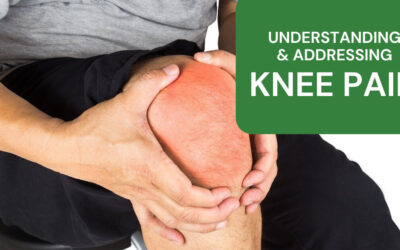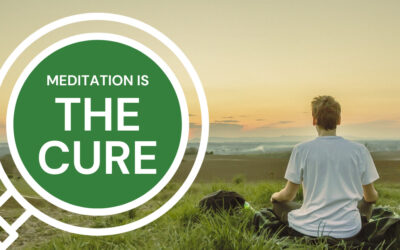Improving Back Pain: Adopting the “Failure is not an Option” Mindset
In the 1995 film Apollo 13, NASA’s flight operations director, Gene Kranz, famously stated, “Failure is not an option.” This sentiment, rooted in the determination to overcome obstacles and achieve success, resonates far beyond space exploration. It is a powerful reminder that we can adopt this mindset to pursue better health. Just as the Apollo 13 mission overcame tremendous challenges to return safely to Earth, we can learn from their resilience and apply it to our well-being.
In addition to the broader concept of improving overall health, the “Failure is not an option” approach can be particularly relevant when addressing and managing back pain.
Mindset and Back Pain
Back pain is a common ailment that can significantly impact our quality of life and hinder our daily activities. However, by applying the same determined mindset that guided NASA’s mission to overcome challenges, we can tackle back pain with resilience and find effective solutions. Let’s explore how this mindset can be applied to improve back pain.
Seeking Expert Guidance:
Just as the NASA team relied on the expertise of their engineers and scientists, seeking guidance from professionals is crucial when dealing with back pain. Consulting with a qualified healthcare provider, such as a physician or physical therapist, can help identify the underlying causes of your back pain and guide you toward appropriate treatment options. By trusting their expertise, you can gain valuable insights and develop a tailored plan to address your condition.
Setting Realistic Goals:
NASA’s mission to the moon was an ambitious goal. Still, it was grounded in realistic expectations and a well-defined plan. Similarly, when it comes to managing back pain, it is essential to set realistic goals. Resolving back pain completely may take time, but improving functionality and reducing discomfort are achievable short-term goals. By working closely with your healthcare provider, you can set realistic milestones and track your progress.
Consistency and Persistence:
The NASA team did not give up when faced with setbacks during the Apollo 13 mission. Similarly, managing back pain requires consistency and persistence. A treatment plan should include strengthening exercises, stretches, yoga, and lifestyle modifications. It is crucial to remain committed and persistent, even when progress seems slow. Staying consistent with your recommended treatment regimen gives your body the best chance to heal and improve over time.
Engaging in Active Rehabilitation:
NASA’s response to challenges during the Apollo 13 mission involved actively engaging in problem-solving and finding innovative solutions. In managing back pain, active rehabilitation plays a similar role. Passive approaches, such as pain medications or rest, may provide temporary relief but often fail to address the underlying issues. On the other hand, active rehabilitation involves targeted exercises and techniques to strengthen the back muscles, improve flexibility, and enhance posture. Take an empowered approach to managing your back pain with a customized plan. There is no one-size-fits-all approach when it comes to back pain.
Modifying Lifestyle and Ergonomics:
NASA’s ability to adapt to changing circumstances is a valuable lesson for those dealing with back pain. Lifestyle modifications and ergonomic adjustments can significantly impact back health. Assessing your daily habits, such as posture, lifting techniques, and sitting positions, can help identify potential triggers for back pain. Making conscious changes, such as maintaining proper posture, taking regular breaks during sedentary work, and engaging in back-friendly exercises, can alleviate strain on the back and contribute to long-term improvement.
Learning from Setbacks:
Just as NASA learned from failures to improve future missions, setbacks can provide valuable insights when managing back pain. When a particular treatment approach or lifestyle modification doesn’t yield the desired results, it’s essential to learn from the experience and adjust your plan accordingly. In addition, tracking your progress and sharing your challenges is critical to reaching your goals and increases the likelihood of finding effective long-term solutions.
Conclusion:
By adopting the “Failure is not an option” mindset, inspired by NASA’s remarkable achievements, we can approach back pain management with determination and resilience. Seeking expert guidance, setting realistic goals, remaining consistent and persistent, engaging in active rehabilitation, and making lifestyle and ergonomic modifications are all crucial steps in improving back pain.
Remember, setbacks should be seen as opportunities for growth and learning. With this mindset, you can navigate back pain challenges and work towards a healthier, pain-free future.
Regular Movement, Strengthening and Stretching are Essential for the Body
Here are a few videos to help you avoid and manage back pain:
Are you tired of living with pain?
Are your activities and daily choices determined by your level of pain?
Are you ready to change your life for the better and gain back your physical freedom?
My unique and custom designed approach comes from years of training, education and experience. Together, we will get you back to living pain free and enjoying life.
Sign up for a private session today
It’s never too late to try something new.

Related Articles:
Understanding and Addressing Knee Pain
Knee Pain is a Common Ailment Knee pain is a common ailment that can significantly impact daily life, hindering mobility and causing discomfort. Understanding the causes and managing knee pain is essential for maintaining overall well-being, whether it's due to...
Meditation is the CURE
Meditation has gained recognition for having a profound effect on the mind and body, leading to improved overall health and longevity.
Movement is the CURE
Including movement into your day can be the cure to many health issues that plague us later in life. Movement has incredible benefits to overall health and helps promote longevity.



